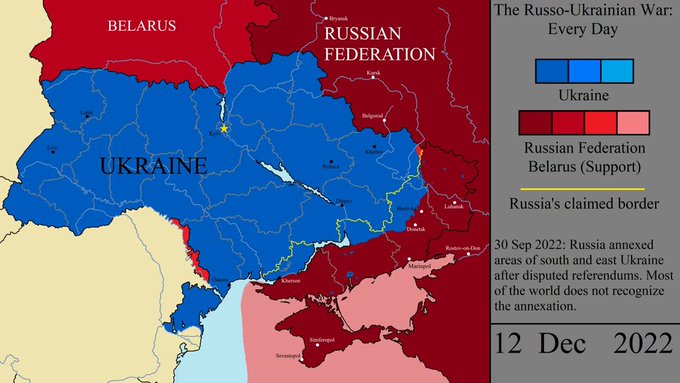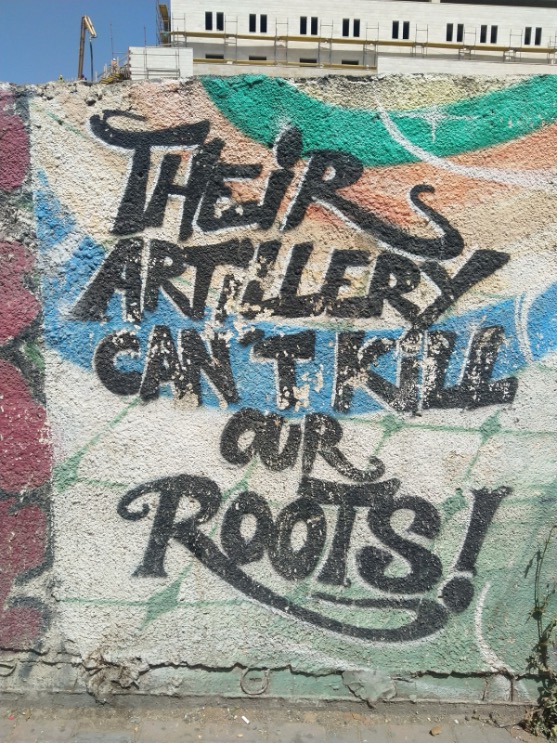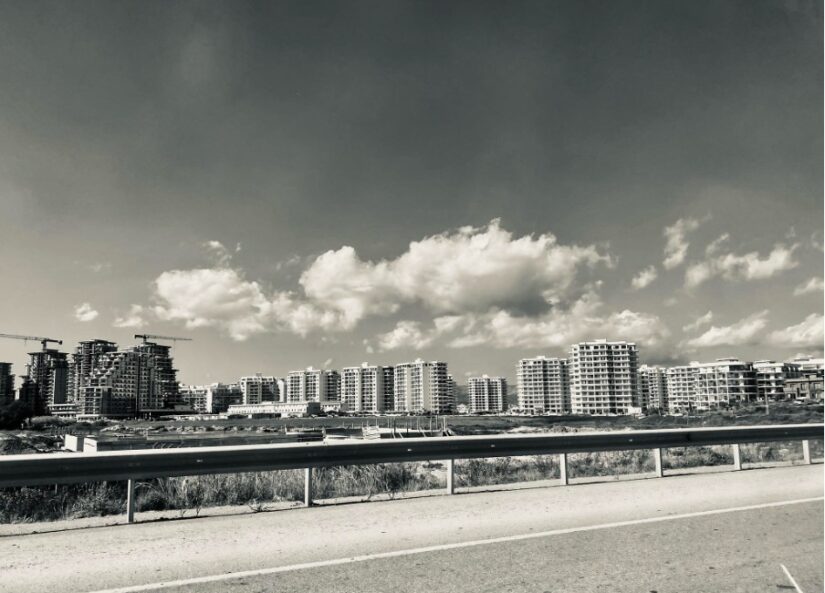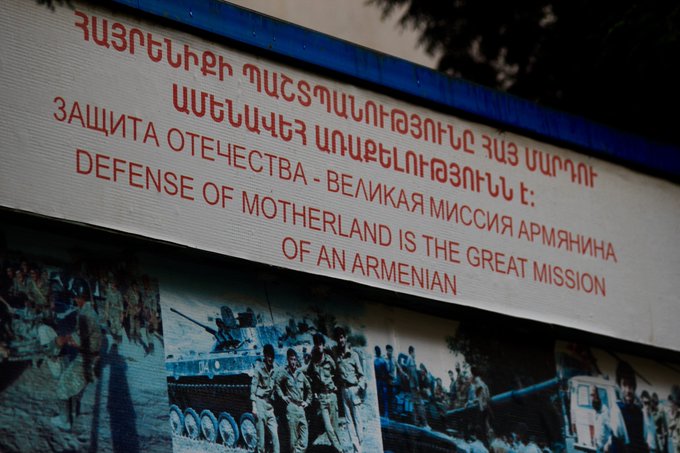The Donbass: From Recognition to Annexation and Beyond
The current conflict between Russia and Ukraine in the Donbass has touched upon one of the controversial issues in international law and international relations, namely that of international recognition. What entities are entitled to earn the status of an internationally recognized state? Russia has long claimed with regards to the Donetsk People’s Republic and Luhansk People’s Republic that the ‘realization of people’s rights to self-determination is achieved without the agreement of the central authorities of the State from which separation is sought. Indeed its position towards recognition expressed within debates of the UNSC regarding the situation in Ukraine has been centred on this very principle of the right to self-determination as a basis for any solution to the war in Ukraine.
This has been in stark contrast to the views expressed by other UNSC permanent members such as the United States, France and the United Kingdom that have since 2014 expressed their primary concern for the respect of the sovereignty of Ukraine as a recognized member of the UN in finding a political settlement to end the conflict in the Donbass which has started in 2014. The issue of recognition and the annexation of the two republics becomes paramount when considering their initial goal towards achieving independence, which was similar to other de facto states in the region such as Transnistria, for example.
Why did the Russia pursue recognition of the independence of the two de facto states in the Donbass before or as a means of annexing Ukrainian territory? It should indeed be noted that before the annexation occurred, there have been serious attempts made in building up the formal features of statehood and state institutions in DPR and LPR. Notwithstanding the extent to which this was achieved, Russia proceeded with recognizing the two secessionist entities as independent states, and immediately after incorporated them as part of the Russian Federation. Russia had indeed moved on beforehand with the usual policy of passportization and military, political, economic and diplomatic support for the two entities since 2014 onwards.
The recognition of the DPR and LPR
Russia’s long-held position vis-à-vis self-determination and unilaterally declared independence (UDI) of Ukraine’s breakaway territories led to the February 21, 2022 recognition of the DPR and LPR. The two mirroring decrees recognized the sovereignty of the two “republics” on the basis of respect of will of the people of DPR and LPR. The same decrees also stated the lack of progress under the framework of the Minsk II Agreement and sought to establish diplomatic relations with the two rebellious statelets. As a follow-up, Russia quickly signed bilateral friendship treaties which, among other things, foresaw the presence of Russia’s Armed Forces as peacekeepers in the Donbass.
Among the other de facto states in the post-Soviet sphere, Abkhazia supported the recognition of the DPR and LPR through a statement of its Ministry of Foreign Affairs on February 22 and a presidential announcement on February 25. This has been added to South Ossetia’s ongoing support since January 2015 for the recognition of the two republics. On the other hand, though Transnistria did not act in a similar way, it had earlier reconfirmed the desire to seek the official recognition by the Russian Federation.
Among the UN member states, Syria was one of the first countries to support the sovereignty acts of the two breakaway regions by announcing its own decision to recognize the DPR and LPR on June 29, 2022. On this occasion the Syrian Foreign Minister stated that “[w]e have been cooperating with the republics of Donetsk and Luhansk for a long time, and we believe that these current conditions will help increase this cooperation.” Furthermore, Syria justified its supportive position towards the independence of the breakaway regions by looking at Russia as its long-standing ally against terrorism. Likewise, North Korea decided to follow suit on July 14, 2022. As one of the few remaining Russia’s allies, North Korea deplored Ukraine’s alignment “with the hostile, unreasonable and illegal policy of the U.S.”, and rejected the notion of Kyiv’s right to oppose a “legitimate exercise of sovereignty.”
Other Russian allies such as Belarus, Venezuela, and Nicaragua extended their support for the Russian Federation and its decision to recognize the “republics” though only at a statement level rather than any formal diplomatic action as seen in the case of Syria and North Korea.
From recognition to annexation: The referenda in the DPR and LPR and the annexation of Ukrainian territory
In September 2022, Russia organized sham referenda for joining the Russian Federation in the Donbass alongside similar ballots organized in the regions of Zaporizhzhia and Kherson – this being the second time since May 2014when the people in the Donbass were balloted on separating themselves from Ukraine.
Despite the various legal rationales publicized by Russia, the referenda and the subsequent incorporation of the Occupied Territories into the Russian Federation were both illegitimate and illegal as they violated the Ukrainian constitution stipulating that “the organization and procedure for conducting referendums are determined exclusively by the laws of Ukraine” (Art. 92). These referenda also violated Russia’s obligations under international law to respect the principle of territorial integrity of Ukraine as pursuant to Article 2, Paragraph 4 of the UN Charter that states that “all Members shall refrain in their international relations from the threat or use of force against the territorial integrity or political independence of any State, or in any other manner inconsistent with the Purposes of the United Nations.” Russia had on numerous occasions re-affirmed its support for this principle in respect to Ukraine after the disintegration of the USSR.
Despite this, on September 19, 2022 the leaders of DPR and LPR, Denis Pushilin and Leonid Pasechnik were instructed by the civic chambers of the Donetsk People’s Republic and the Lugansk People’s Republic to hold referenda on the issue of the two self-proclaimed republics joining the Russian Federation. On the following day these referenda drafts were signed into laws by the two Donbass leaders and on September 21, Vladimir Putin offered support in an address to the nation for the holding of the referenda. Between September 23 and 27 the sham referenda were held in the Donbass and the Zaporizhzhia and Kherson regions. Printed in Russian for the DPR and LPR, and in Russian and Ukrainian for the other two regions, the question asked in the referenda referred to the secession of the territories from Ukraine and subsequent accession into the Russian Federation.
In the DPR, the idea of joining Russia was supported by 99.23% of the participants in the referendum, which saw a turnout of 97.51%, and in the LPR, by 98.42% with a turnout of 94.15%. The ballots considered illegitimate by the international community were the first steps in the annexation of the more than 15% of Ukrainian territory which took place in a ceremony in Moscow on September 30, 2022 with the presence of Denis Pushilin and Leonid Pasechnik from the Donbass, and the heads of the military-civilian administrations of the Zaporizhzhia and Kherson regions, Yevgeny Balitsky and Vladimir Saldo.
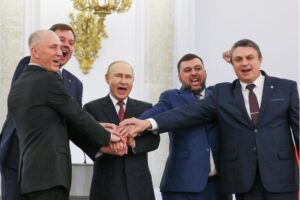
Image: Formalising annexation of Ukrainian territories in Kremlin (Source: Mikhail Metzel/TASS)
In his annexation speech, Vladimir Putin described the annexed territory as “four new regions of Russia,” claiming that the people of these four regions have become “Russian citizens forever” and accusing the West of sabotaging the energy security of Europe through its support for Ukraine in its counter-offensive against the Russian military campaign. Putin further stated that “I have no doubt that the Federal Assembly will support the constitutional laws on the accession to Russia and the establishment of four new regions, our new constituent entities of the Russian Federation, because this is the will of millions of people. It is undoubtedly their right, an inherent right sealed in Article 1 of the UN Charter, which directly states the principle of equal rights and self-determination of peoples.”
Playing with statehood: Attempts to build the institutions of the DPR and LPR
The issue of recognition and subsequent annexation into the Russian Federation of the DPR and LPR poses practical questions in terms of understanding the way in which institutional and leadership changes have taken place in those breakaway regions in the past year. The underlining question here is whether the state-building that started in 2014 was indeed meant to establish functioning institutions with leadership legitimately running them. It is important to understand how self-proclaimed republics were set into motion of “independence” course prior to the events described above and then to describe the main aspects that have changed following the annexation.
In 2014, Alexander Zakharchenko became the first leader of the DPR after having been involved in the military campaign against forces of the Ukrainian Army. The LPR elected its own figurehead and passed a new constitution on May 19, 2014 – a week after the Ukrainian region held an independence referendum. The republic’s State Council elected Valery Bolotov as the head of the republic. Bolotov was proclaimed “people’s governor” of the region on April 21 at a people’s gathering in a seized building of Ukraine’s Security Service (SBU) in Luhansk.
Playing with statehood meant that the DPR and the LPR had established “democratic constitutions” in May 2014 according to which the government, other state organs, armed forces, security forces, intelligence services and courts would function. The established institutions operated separately from the central government in Kiev, and in close coordination with the Russian Federation that provided economic support since 2015 in the form of paying the pensions and providing other social benefits. In addition, Russia encouraged massive passportisation campaign that would loosen the de facto states’ links with Ukraine and could be possibly used as a pretext to intervene in the “protection of Russian Federation citizens”. In January 2022, a survey showed an increase of support for joining the Russian Federation from 50% to 70% compared to 2020 data, this being a proof that the Russian campaign to win “hearts and minds” by socio-economic means had been successful.
All of the institutions of the de-facto states were staffed and maintained an online presence showing the activity of the government and the heads of state. These institutions all worked better due to Russian support as was exemplified by their online presence showcasing various government activities since 2014 to the present day. Indeed, between 2014 and 2022 the extent to which Russia managed to create state institutions in the DPR and LPR has deepened, having had the effect of creating de-facto authority over parts of the Ukrainian territory.
The aftermath of annexation
Since the escalation of war and annexation of the DPR and LPR important institutional changes have occurred. The current leader of the DPR, Denis Pushilin, for example, is a member of the United Russia Party, showing the extent of growing control that Russia maintains in the region, as well as now being the Acting Head of the DPR since the Russian annexation. Similarly the leader of the LPR Leonid Pasechnik is now Acting Head of the LPR republic and a process of electing representatives from the United Russia Party as candidates for deputies of the legislative body of the LPR has already taken place.
Other changes include the process of integrating the DPR and LPR into the legislative process of the Russian Federation through the most recent Federal Law on Establishing Russian Federation Courts in the Donetsk People’s Republic and Introducing Amendments to Certain Legislative Acts of the Russian Federation from April 3, 2023. This law represents a good example of the type of institutional and legislative processes occurring since the annexation of the DPR and LPR as well as the challenges that these now pose for returning to the provisions of the Minsk Agreement or agreeing on any possible peace scenario. As long as Russia is committed to integrate the Donbass into its own institutions the prospects for restoring Ukrainian sovereignty over these territories remain bleak.
In the aftermath of annexation, it is therefore fair to suggest that the Russian policy of supporting the institutions of the de facto states had been geared towards the harmonization of policies in the Ukrainian territories with those of Russia towards their integration into the Federation rather than the genuine establishment of de facto independent states.
Author: Ana Maria Albulescu


